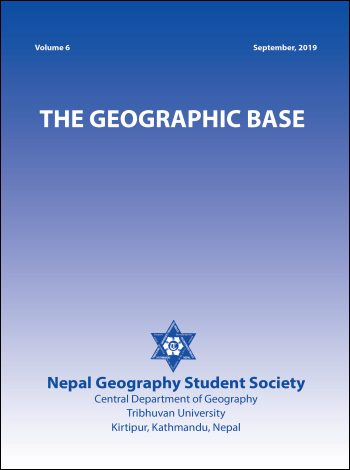Water Resources and Adaptation Strategies to Water Scarcity at Sukajor Village in Ramechhap Municipality
DOI:
https://doi.org/10.3126/tgb.v8i01.43478Keywords:
Spring , Water sources, Adaptation strategyAbstract
Climate change has stressed water resources. Water availability and its management is critical for rural livelihood including farmers. Decreasing water supplies have been causing negative impact to rural people's livelihoods in mid-hills of Nepal, particularly for crop production during the dry months of the year. People are coping with different adaptation strategies that varies with time, situation, and available technology. In this context, the main objective of this research is to study water resource and adaptation strategies of local people of Sukajor-7, Ramechhap Municipality. Primary and secondary data were collected using GPS survey, household survey, KII, FGD, and field observation. The study result shows water supply has not met the demand, only 74.5 percent of total daily drinking water demand has met. Though traditional water management practice exists, water demand has not fulfilled yet. However, water management system was traditional as they kept water sources open and was not able to store the water so that they had to travel to the water sources located at longer distance. The supply of water is insufficient even though 86 the people had made intake in the sources and operated lift system in Chhatiwane, Agaute and Chimkhi. People harvest rain water as alternative sources of water.
Downloads
Downloads
Published
How to Cite
Issue
Section
License
© Nepal Geography Student Society




